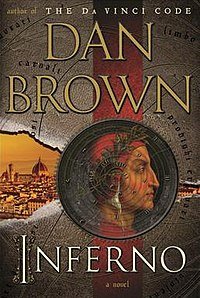2013: Release of Dan Brown’s “Inferno”
In the world of literature, May 14th, 2013, marked a significant event. It was the day when renowned author Dan Brown released his highly anticipated novel, “Inferno.” This masterpiece marked the fourth installment in his famous Da Vinci Code series. The release of “Inferno” captivated readers worldwide, taking them on an exhilarating journey filled with mystery, historical references, and heart-stopping suspense.
Dan Brown’s “Inferno” follows the adventures of Robert Langdon, a symbologist, who finds himself entangled in a race against time. Langdon must solve a series of intricate puzzles inspired by Dante’s “Inferno” to prevent a global catastrophe. As the story unfolds, readers are taken on a thrilling ride through the streets of Florence, Venice, and Istanbul, where art, history, and literature converge.
The Signature Style of Dan Brown
Dan Brown is known for his unique ability to blend historical facts with fiction seamlessly. His novels are meticulously researched, providing readers with a wealth of knowledge about art, architecture, and literature. “Inferno” is no exception.
Throughout the novel, Brown weaves together historical references, showcasing his expertise in the subject matter. From the works of Dante Alighieri to the masterpieces of Botticelli and Michelangelo, readers are immersed in a world where the past and present collide.
Brown’s attention to detail and accuracy make his novels not only entertaining but also educational. “Inferno” is a perfect example of how fiction can serve as a gateway to learning and exploring the rich tapestry of human history.
The Impact of “Inferno”
Upon its release, “Inferno” quickly became a global sensation. Fans of Dan Brown eagerly awaited the continuation of Robert Langdon’s adventures, and they were not disappointed. The novel received widespread acclaim for its gripping storyline, well-developed characters, and thought-provoking themes.
Readers were drawn to the intricate puzzles and codes that Langdon must decipher, mirroring the success of Brown’s previous novels. The combination of suspense, historical intrigue, and the race against time kept readers on the edge of their seats, unable to put the book down.
Furthermore, “Inferno” sparked a renewed interest in Dante’s “Inferno” and the works of art and literature mentioned throughout the novel. Many readers found themselves diving deeper into these subjects, eager to learn more about the historical context and symbolism behind the story.
The Legacy of “Inferno”
Even years after its release, “Inferno” continues to captivate audiences. The novel’s impact extends beyond the literary world, with adaptations for the big screen and discussions in academic circles.
In 2016, “Inferno” was adapted into a movie starring Tom Hanks as Robert Langdon. The film brought the thrilling storyline to life, allowing audiences to visually experience the intricate world created by Dan Brown.
Additionally, “Inferno” sparked conversations among scholars and art enthusiasts. The novel’s exploration of Dante’s “Inferno” and the symbolism found in various works of art prompted further analysis and interpretation.
For those interested in delving deeper into the historical and artistic references in “Inferno,” numerous external references are available. These resources provide a wealth of information, allowing readers to explore the connections between fiction and reality.
Conclusion
The release of Dan Brown’s “Inferno” on May 14th, 2013, marked a significant moment in literary history. This thrilling novel, filled with historical references and heart-stopping suspense, captivated readers worldwide. Through the adventures of Robert Langdon, Dan Brown once again showcased his signature style of blending fact with fiction seamlessly.
“Inferno” continues to leave a lasting legacy, inspiring readers to delve into the world of art, history, and literature. The novel’s impact extends beyond its pages, with adaptations for the big screen and discussions among scholars. Dan Brown’s “Inferno” is a testament to the power of storytelling and its ability to transport readers to new worlds while igniting their curiosity.

